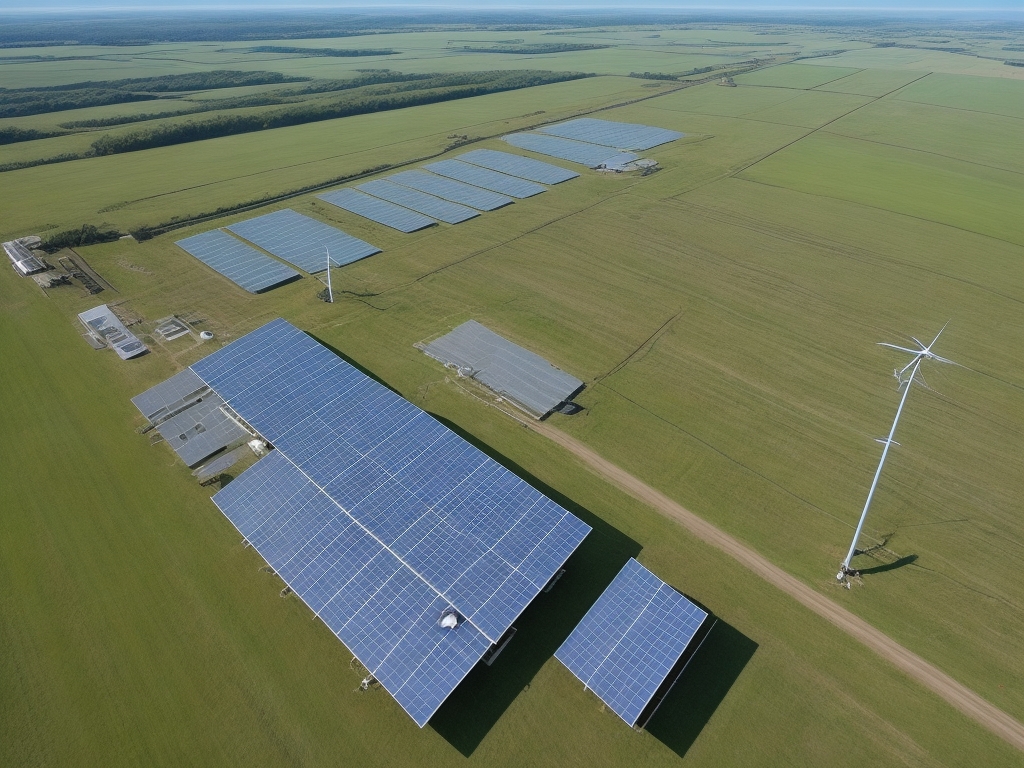 The demand for reliable energy sources is at an all-time high. But what about those hard-to-reach places, where power lines are but a distant dream? Remote locations, whether they are far-off villages, research stations in Antarctica, or remote cabins in the woods, pose a unique challenge when it comes to providing electricity. The solution? Renewable energy.
The demand for reliable energy sources is at an all-time high. But what about those hard-to-reach places, where power lines are but a distant dream? Remote locations, whether they are far-off villages, research stations in Antarctica, or remote cabins in the woods, pose a unique challenge when it comes to providing electricity. The solution? Renewable energy.
The Remote Energy Dilemma
Imagine living in a place without access to a stable power supply. Remote locations often face this dilemma, making everyday life challenging. Traditional power grid extensions can be costly and impractical in these areas due to their isolation. Here’s where renewable energy steps in as a game-changer.
Solar Power
One of the most popular and effective forms of renewable energy for remote locations is solar power. Solar panels capture the sun’s energy and convert it into electricity. They’re versatile, easy to install, and require minimal maintenance. In sunny regions, like deserts or tropical islands, solar power can provide a consistent source of electricity.
Wind Energy
In locations with consistent wind patterns, wind energy is a powerful option. Wind turbines capture kinetic energy from the wind and transform it into electricity. Wind farms are becoming more prevalent in remote areas, and advancements in technology have made them more efficient and less intrusive to local ecosystems.
Hydropower
For areas near water bodies, hydropower is a sustainable solution. It harnesses the energy from flowing water, such as rivers or streams, to generate electricity. Small-scale hydropower systems are particularly effective in remote locations and can provide reliable power.
Biomass Energy
Biomass energy involves using organic materials, like agricultural waste or wood, to generate power. This renewable energy source is perfect for remote areas with abundant natural resources. It not only provides electricity but also encourages responsible resource management.
Geothermal Energy
Geothermal energy is another remarkable option for remote locations situated near geothermal hotspots. It involves tapping into the Earth’s internal heat to produce electricity. Geothermal power plants are efficient and eco-friendly, as they release very few emissions.
Energy Storage
In remote locations, where the availability of renewable energy sources can be unpredictable, energy storage solutions emerge as the unsung heroes. These areas, often far from conventional grid systems, face a unique challenge – the intermittent nature of renewable energy sources. Solar panels may not generate power during cloudy days, and wind turbines may slow down during lulls in the breeze. To combat this unpredictability, energy storage solutions, such as batteries, have become essential.
Energy storage acts as a buffer, storing excess energy when it’s abundant and releasing it when needed. This ensures a continuous and reliable power supply, regardless of the vagaries of nature. When the sun is shining or the wind is blowing, surplus energy is stored in batteries for use during less favorable conditions. This not only bridges the gap in energy supply but also optimizes the use of renewable resources, reducing wastage.
Moreover, energy storage systems enhance the resilience of remote communities. They provide a backup power source during emergencies, ensuring that services like healthcare facilities, communication, and lighting can continue to function. These systems can be tailored to meet the specific needs of the community, making them a versatile and invaluable component of remote renewable energy solutions.
Microgrids
In the world of remote energy distribution, microgrids are a game-changing solution that empowers local communities to take charge of their energy needs. These independent, self-sustaining power networks are a practical and efficient approach to ensuring a reliable electricity supply in areas far from traditional grid systems.
One of the key advantages of microgrids in remote locations is their ability to provide energy independence. These communities can manage their energy resources autonomously, reducing their reliance on external sources and the uncertainties that come with them. With microgrids, residents have greater control over their power supply, making them less vulnerable to outages and supply disruptions.
Microgrids are adaptable and scalable, which means they can be tailored to the unique needs of each community. This flexibility allows for the integration of solar panels, wind turbines, hydropower systems, or other renewable sources, depending on what’s most suitable for the location.
These microgrids aren’t just about energy distribution; they represent a step towards sustainable living. By harnessing local renewable resources and managing them efficiently, these communities reduce their environmental impact and carbon footprint. This shift not only benefits the environment but also contributes to the broader goal of mitigating climate change.
Benefits of Renewable Energy in Remote Locations
The adoption of renewable energy in remote locations brings a multitude of benefits. It not only provides a consistent power source but also reduces the environmental impact. Additionally, it fosters economic development by creating jobs and stimulating local industries, such as manufacturing and maintenance of renewable energy systems.
Energy Independence in Kodiak Island, Alaska. The microgrid in Kodiak Island is powered by a combination of wind and hydropower. This renewable energy source has made the community almost entirely self-sufficient when it comes to energy. By reducing their reliance on fossil fuels, the community is not only more environmentally responsible but also better equipped to face fuel shortages or supply disruptions.
Resilience and Carbon Footprint Reduction in Ta’u, American Samoa. The tiny village of Ta’u has demonstrated remarkable resilience by relying solely on solar power. With limited access to conventional fuel sources, the village had often faced fuel shortages. By embracing solar power, they’ve eliminated this problem and reduced their dependence on external fuel supplies, making their energy source more stable and secure. This transition has also significantly reduced their carbon footprint.
Improved Living Conditions in Maasai Mara, Kenya. The Maasai Mara in Kenya has seen a remarkable improvement in living conditions through the installation of solar power systems. Access to electricity has opened up a world of opportunities for education, healthcare, and economic activities. Solar power has brought light to the lives of the people in this remote region, illustrating the transformational power of renewable energy.

